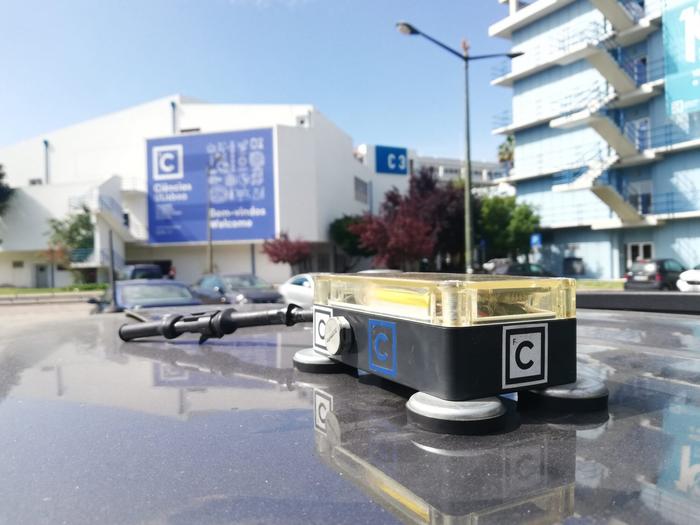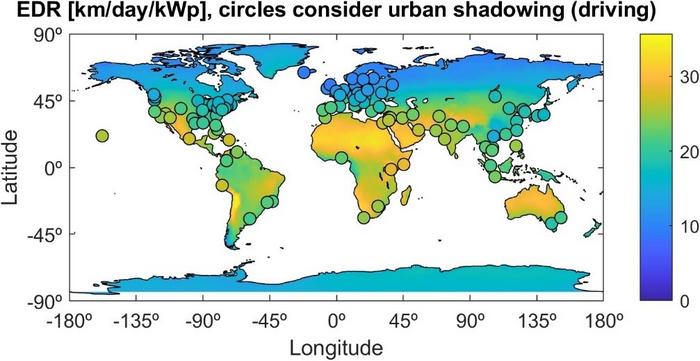From Faculty of Sciences of the University of Lisbon 26/09/23

A new study, modeling the potential of solar-powered vehicles in the urban context in 100 cities across the world, shows that solar energy provides a range between 11 and 29 km per day, reducing charging needs by half.
Despite the rapid adoption of electric vehicles, the transport sector is still responsible for around a third of global carbon dioxide (CO2) emissions worldwide.
Therefore, to achieve decarbonization targets, it is required to significantly decrease the emissions associated with mobility.
Integrating photovoltaic modules into electric vehicles, solar cars, can contribute to this goal, reducing CO2 emissions associated with electricity generation and the charging costs and frequency, with benefits for users and the electrical grid itself.
“Cities are today the main market for electric vehicles and, due to the relatively small travelled distances, are particularly interesting for solar-powered vehicles.

However, in urban areas, we have buildings, trees and other obstacles casting shadows onto the roads thus limiting the solar potential of driving or parked vehicles.
The purpose of the work was to assess if the impact of these shadows is a significant limitation to the potential of solar cars”, explains Miguel Centeno Brito, first author of this study, researcher at Instituto Dom Luiz – IDL, at the Faculty of Sciences of the University of Lisbon (Ciências ULisboa) (Portugal).
The study also finds that the most favorable locations for solar-powered vehicles are cities in Africa, the Middle East, southern Europe and Southeast Asia, although the potential is interesting in other geographies, including China, North America and Australia.

Losses associated with shading in the city are around 25%, and therefore relevant, but not an impediment to the large-scale dissemination of this solution.
Meanwhile, the research team launched an experimental campaign with citizen scientists to experimentally validate the model.
With growing urban populations and concerns about environmental sustainability becoming increasingly urgent, solar-powered vehicles could not come at a more opportune time.
“Our results can help establish a roadmap for policymakers and the automotive industry to accelerate the transition to a more sustainable and environmentally friendly urban future”, concludes Miguel Centeno Brito.



